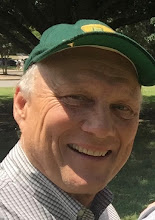Five years after Hurricane Katrina socked us and soaked us, we are tired, but we still sport that snaggletooth smile. We have hope and faith and dark circles under our eyes.
Our smile reflects a true hospitality and a determined hope for our future. Nobody knows the trouble we’ve seen. But how could they? They come to see our parades and ballgames, not our soup kitchens and crime scenes.
The past five years are a blur. We worked liked Trojans, lived one day at a time, and crammed eternity into the blink of an eye. Who knew five years was over—or would ever pass? We slogged through a Katrina time warp when all the clocks drowned. Like the kid in the backseat, I am perpetually wondering, “Are we there yet?”
Truthfully, we have not emerged from our submerged world no matter how much we long to be rid of it. Those sickening brine lines—marking the height of the flood and the depth of our misery—are still tattooed on fences, pillars, buildings, and on our souls. What simply could not happen did, slicing a horizontal reminder through everything we know. My vision may be better or worse, but the world looks different from here.
I have passed from feeling condemned to feeling confused to feeling useful to feeling hopeful. But I am ever one step away from the murk of disturbing memories. Honestly, my mind resists going back to Hurricane Katrina and the immediate aftermath. As time goes by the details fade but the overall impression of the great flood is sobering and painful.
Today hundreds of construction cranes cast their shadows on our half-recovered landscape, and they are towers of hope. Going east, those Twin Spans across Lake Pontchartrain are an engineering marvel, almost completed. New ramps and fly-overs are taking shape at the interchange of Interstate 10 and Causeway Boulevard. The Huey P. Long Bridge is bulging with giant new biceps for wider lanes.
Our most interesting bridge, the Danziger, once the largest vertical-lift bridge in the world, has become a symbol for police brutality and corruption. We are horrified and heartbroken by these revelations. Rampant lawlessness in our streets is certainly related to any disregard for the law among our police, in our courts, and in our culture.
The drive from the Industrial Canal east to Interstate 510 remains a disturbing and depressing journey. We cannot get comfortable with our current reality in the footprint of the flood.
People are generally optimistic, I find, but also frustrated at the slow progress in some areas. Unattended infrastructure problems detract from the work we have accomplished in our homes and neighborhoods. The astonishing levels of murder and mayhem cause widespread anxiety and confusion about the safety and stability of our city.
The faith community is vibrant and deeply involved and invested in the city’s restoration. We leapt up after the storm, addressed the immediate needs, and helped clean up the mess. Collectively, we deployed a million volunteers. We continue the work of rebuilding our city. The flood washed us out of our pews and into our streets. Thousands of congregations here and elsewhere have found renewed purpose and joy in the hard work of serving people in need. This may prove to be a permanent course correction for many households of faith.
Vast resources have been expended through our churches and affiliated nonprofits, as with all sectors of our community. We are delighted to see progress in housing, education, health care, and flood protection and eager to enjoy and highlight these permanent improvements to life in New Orleans.
We remember those who perished in the great flood. We acknowledge the historical significance of Katrina in our personal and collective lives. We embrace and assimilate the lessons we learned in our time of trouble. And we renew our resolve to fashion a more peaceful and prosperous future for the city that we love.
Wednesday, September 1, 2010
Subscribe to:
Post Comments (Atom)




1 comment:
Great post, David. Thanks for taking the time to give us a side window perspective!
Post a Comment